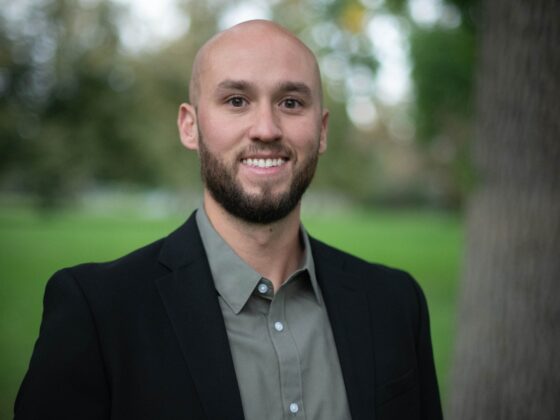Returning after a week-long professional development experience, I felt energized. I’d deepened my knowledge, enjoyed rich conversations with colleagues and felt that familiar surge of excitement about applying new insights to our work with SageRiver clients.
I wasn’t surprised by the jolt of enthusiasm. Exploring new ideas with others is a favorite pursuit, and I’m not alone in feeling that way. Most organizations offer similar experiences for employees, knowing they view them as “perks” with true business value.
If you check back in a few months, however, those same employees often report that their excitement has faded. Once they returned to work, they had no way to apply and extend their learning in community with others. As one client observed, “We aren’t taught how to evolve, or to keep evolving together.”
His observation gets at the heart of two challenges facing businesses today—innovation and employee engagement. Both jump dramatically when companies transform into true learning organizations.
Alive Through Learning
As any parent will witness, humans thrive on learning. Observe the excitement a toddler shows after mastering a new skill. Listen to kids cheer after executing a new play against an opposing team. Despite the work that goes into it, learning is fun! It’s rewarding. It makes us feel engaged and alive.
Learning also helps us move from what Stanford psychologist Carol Dweck calls a fixed mindset to a growth mindset. In her groundbreaking book “Mindset: The New Psychology of Success,” Dweck asserts that how we think about ourselves influences almost every aspect of our lives. Those who live with a fixed mindset think they have an unchangeable set of talents and attributes. They are resistant to criticism and avoid challenges because they don’t believe they can get better. In contrast, those with a growth mindset believe they can improve through feedback and hard work. When we learn, we prove the growth mindset is correct and become confident of our ability to overcome challenges and initiate change.
Dweck’s insights apply to organizations as well as individuals. In fact, I believe they are even more important for companies because a growth mindset produces innovation and prosperity. The fixed mindset is where the status quo lives, and we no longer have time for the status quo.
Steps Toward Transformation
Transforming to a learning organization requires a holistic approach because learning is an attitude, value, action and community all rolled into one. Here are some strategies and tactics we recommend to help you make the shift:
Offer Creative Spaces and Experiences
In a famous business lecture, British comedian John Cleese recommended play and stimulating environments to foster team creativity. We agree. Simple changes, such as striking artwork and engaging meeting spaces, can change the mood of a team and spark new ways of thinking. Trying new activities can also prompt creativity. One marketing agency, for example, tried improvisational comedy together. The goal wasn’t to find new careers; it was to relax the mind and signal that new ideas and approaches were welcome.
Invest in Learning Journeys
One way organizations inspire learning is through their unique employee benefits. Some companies provide extended paid sabbaticals. Others offer a paid week off to try a new experience or study a subject of the employee’s choosing. Still others provide weekly time dedicated to the employee’s choice of investigation. Invariably, employees come back to work re-energized and ready to share insights from their learning journeys.
Foster Curiosity
Curiosity is one of SageRiver’s organizational values, and there’s a reason why. Information alone has little value. When we dig deeper to understand causes, connections and implications, we translate information into knowledge, which can then be acted upon to add value. As Bernard Baruch once noted, “Millions saw the apple fall, but Newton asked why.”
Learning organizations put this principle to work by making curiosity a formal part of team agendas. They dedicate staff time to exploring topics of interest, and they reflect upon their learning. They discuss how concepts apply to their work and then implement, prototype and test their ideas. Not all subjects will be aligned to business priorities, however. In learning organizations, learning is valued for its own sake and can flow from individual interests.
Develop Storytellers
At SageRiver, we believe that most of what we know is learned through story. To reap the benefits of learning, teams need time to internalize their discoveries and tell stories about how those insights relate to their lives and work experiences. Storytelling deepens learning and helps listeners connect with new ideas. It’s a powerful tool for organizational growth.
Engage with the Community
Learning takes place outside, as well as inside, the organization. Engaging with your community can be an important source of insight. Learning organizations encourage employees to serve on nonprofit boards, take service learning trips and volunteer for different causes. They dedicate time for team members to discuss their experiences, so they can reflect upon them and grow together.
Embrace Failure
People with a growth mindset know that learning is a journey, and failure is a natural part of it. The key is to evaluate, adjust and keep at it until you achieve your goals. As hockey legend Wayne Gretzky said, “You miss 100 percent of the shots you don’t take.”
Business leaders are taught that organizations must grow or die. Learning is the attribute that powers organizational growth and innovation. As you transform into a learning organization, you’ll see benefits everywhere. Ideas come from all corners of the organization. Engagement rises. Relationships deepen, and synergies abound. If you’d like help making this shift within your organization, contact SageRiver Consulting.




